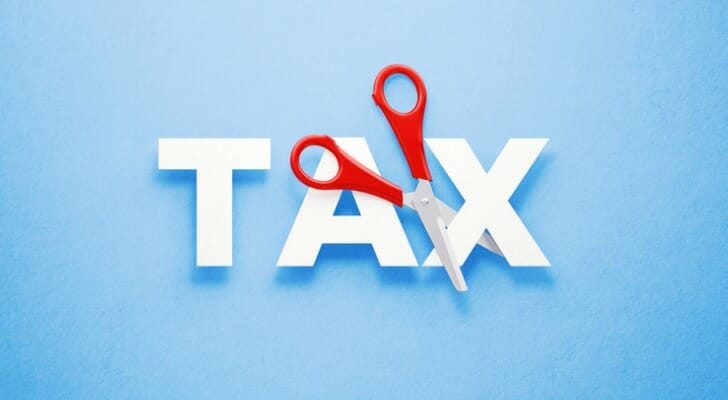 Anyone whose income is less than the tax filing threshold is not required to file an income tax form with the IRS. For most taxpayers, this threshold is usually set at or around the standard deduction. However, it’s a good idea to file your taxes anyway. Low-income Americans often qualify for tax credits and refunds that can help them with their finances. Here’s what you need to know. Consider working with a financial advisor as you prepare taxes and do tax planning.
Anyone whose income is less than the tax filing threshold is not required to file an income tax form with the IRS. For most taxpayers, this threshold is usually set at or around the standard deduction. However, it’s a good idea to file your taxes anyway. Low-income Americans often qualify for tax credits and refunds that can help them with their finances. Here’s what you need to know. Consider working with a financial advisor as you prepare taxes and do tax planning.
The Tax Filing Threshold
The tax filing threshold is the amount of money you need to earn before you are legally required to file an income tax return with the IRS. While this information may be subject to change, at time of writing for most taxpayers the IRS sets this threshold at the standard deduction.
This means that if your total income is less than the standard deduction for your filing status that year, you likely do not have to file a tax return with the IRS. You can literally skip tax season altogether. For taxpayers filing their 2021 taxes this threshold is $12,550 for single filers and $25,100 for a married couple. (See the linked IRS guidance for other filing statuses.)
This is the case for most taxpayers. However, as with all things tax, there are several exceptions to this rule that can change an individual’s filing threshold. The most common are:
- If you are over 65: The filing threshold increases. You do not have to file taxes if you earned less than $14,250 for single filers and $27,800 for married couples.
- If you are self-employed: There is almost no filing threshold. You must file taxes if you earned more than $400 combined. This is because you will owe payroll taxes.
The tax filing threshold applies to all taxable income that you receive over the course of the year. Even if additional deductions and credits would reduce your income (or even zero it out altogether) you must file taxes if your total earnings exceed the threshold.
To be clear, most Americans pay some kind or kinds of taxes. Firstly, all workers owe the payroll tax no matter how little they earn. This is a flat 7.65% tax that applies up to the payroll tax cap. In 2022 this cap is $147,000, after which the payroll tax no longer applies to each new dollar of income. Secondly, most Americans pay sales taxes on the products and services they buy. This form of tax is less noticeable because people pay it in small amounts over time.
Reasons to File With Little or No Income
The IRS does not require you to file taxes below the filing threshold because, by definition, you won’t owe any income taxes. However, there are several good reasons why you should file a tax return even if you make less than the tax filing threshold. For one thing, the U.S. government and the IRS often use former tax returns as a form of identification. You can make future interactions with the government much easier if you don’t skip tax filing season.
For another thing, financially it’s usually a good idea to file your taxes because it’s quite possible that you can get money. Around three-quarters of people who file tax returns with the IRS receive a refund from the agency. Most of the time this is when an employer withheld income, and once the taxpayer does their taxes they’re entitled to a portion of that money back. Generally this happens because employers withhold income at your base rate of pay. Once you take your deductions, such as the standard deduction, your taxable income falls below that rate, which entitles you to a partial refund. In addition, many low-income taxpayers qualify for tax credits such as the earned income tax credit, educational tax credits or the child tax credit.
Filing your taxes allows you to stay on top of these refunds. Tax rules only allow you to claim most refunds within three years of the year in which the refund was due. So, for example, say you are owed a refund for the tax year 2021. You must file a return in either 2022, 2023 or 2024 in order to claim that refund. Absent special circumstances, if you wait any longer you will lose that money.
In this guidance the IRS lists several specific circumstances under which it recommends that low-income households file taxes. (Look for the recommendations under “Who Should File.”) However, as a general rule, we recommend filing taxes for most given years if you are an independent household (that is, an adult who is not someone’s legal dependent).
How to File with Little or No Income
You can file your taxes using either the standard Form 1040. (Historically,, there was a simplified version of this form called the 1040 EZ. This no longer exists.) The IRS offers an online tax filing portal, and taxpayers with an adjusted gross income below $73,000 can access the version which offers guided services to help you fill out these forms. In addition, tax preparation services such as Intuit and H&R Block are required to offer free federal filings for households below certain incomes, which any taxpayer below the tax filing threshold will meet.
We particularly recommend using either the IRS service or an online preparation service because they are likely to catch low-income credits and deductions that you qualify for. However do not get tricked: Most tax preparation companies work hard to charge households for filing services despite their legal obligations. If you make below the filing threshold, you can file your taxes online for free.
The Bottom Line
If you have a low enough income, you fall below the tax filing threshold and do not have to file federal income taxes. For most households, this threshold is set at the standard deduction for their filing status. However, you can still file taxes using a standard Form 1040, and most likely should given the likelihood that you can receive a tax refund.
Tips on Taxes
- Preparing for income taxes isn’t fairly easy for most people. If you’re a W-2 employee, the odds are that the IRS has already collected more than you owe, so now it’s just a matter of doing the paperwork to get your money back. If you might owe money, though, now’s a good time to start getting a sense of what that bill will look like.
- Most people think that you only need a financial advisor if you have lots of money. That’s wrong. It can also be an expensive misunderstanding. Finding a qualified financial advisor doesn’t have to be hard. SmartAsset’s free tool matches you with up to three financial advisors who serve your area, and you can interview your advisor matches at no cost to decide which one is right for you. If you’re ready to find an advisor who can help you achieve your financial goals, get started now.
Photo credit: ©iStock.com/Moyo Studio, ©iStock.com/MicroStockHub, ©iStock.com/damircudic

